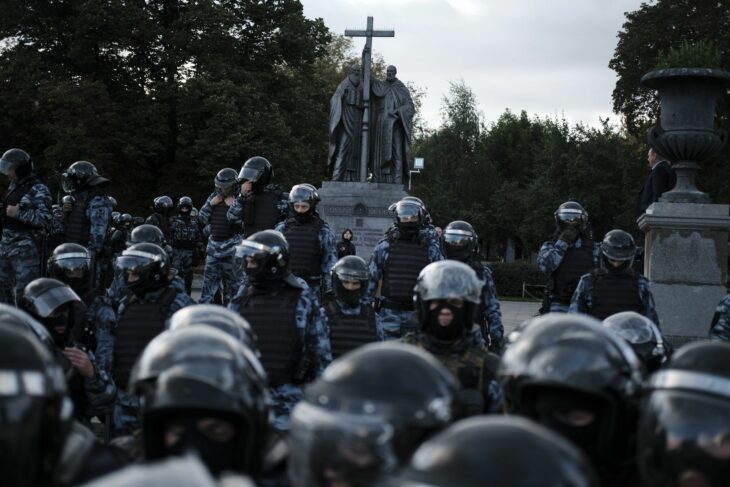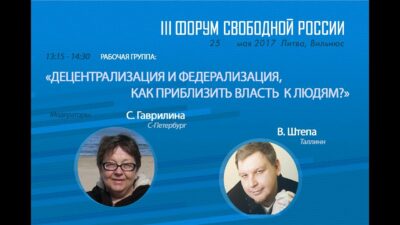Lincoln Pigman on how Russian authorities used digital technology to suppress Moscow protests

The Russian elections of Sept. 8 attracted international attention to an extent that is unusual for a non-presidential poll. Russians voted nationwide, though what truly grabbed global headlines were the elections to the Moscow City Duma (the Mosgorduma).
The Mosgorduma elections and the summer of protests that preceded them have been interpreted in many different ways. Some note how it speaks to the persistence of opposition to the Kremlin and Russia’s ruling party; others highlight the strain under which Russia’s Kremlin-managed party system has come, and the authorities’ willingness to resort to brute force against ordinary citizens. What has not been scrutinised in coverage and analysis, however, is the role of digital technology in the authorities’ response to the demonstrations. At the heart of the Kremlin’s still ongoing crackdown on the opposition and its supporters is the prominent use of digital tools. These digital tools provide an opportunity for the authorities and demonstrate how wary of and hypersensitive to digital dissent they are; they are a staple of the authorities’ toolkit of repression, as well as a source of regime insecurity.
In a 2018 report, I produced a typology of Russian strategies for “reining in the Runet”. It ran as follows: “1) restricting internet users’ access to problematic content and information; 2) passively deterring online dissent by limiting internet users’ anonymity; 3) actively deterring online dissent by threatening internet users with punitive sanctions; and 4) competing with and drowning out online dissent by covertly producing and disseminating pro-government content and information.” The authorities’ response to the Moscow protests, I demonstrate below, drew on all four approaches, involving efforts to spread pro-Kremlin propaganda, disrupt access to subversive content and information, and identify and prosecute demonstrators.
Spreading pro-Kremlin propaganda
Competing with the opposition for the attention of Runet users is rarely the Kremlin’s strategy of first resort; more rarely still is it the regime’s strong suit. But that did not stop the authorities from spending the summer disseminating pro-Kremlin propaganda online. Much of it sought to encourage Muscovites to support pro-Kremlin candidates in the September elections, while some aimed to discourage their participation in the protests and to discredit Alexei Navalny’s ‘smart voting’ strategy.
The most prominent such attempt, the release on YouTube of a music video for the Timati and Guf rap song “Moscow,” exemplified the tendency of the authorities to produce content and information that Runet users find “clumsy and insincere,” as Andrei Kolesnikov characterized the clip, which was deleted after receiving more than a million dislikes, a Runet record. Its lyrics praised Moscow mayor Sergei Sobyanin while deriding protesters and the LGBT community, the last of these a recurring theme in pro-government content and information.
Others, however, were somewhat more subtle and averted such a backlash, even as they failed to thwart the opposition’s protest and electoral strategies. Journalists discovered that professionally produced videos criticizing the “smart voting” strategy and at least one list of pro-Kremlin Mosgorduma candidates whom Muscovites were urged to support were shared across social media. Banner ads on different websites led Runet users to pro-government content and information, sometimes at URLs cleverly evoking opposition slogans. And in a move that recalled past revelations about the cooperation of Russian internet personalities with the authorities, an advertising agency was found to have commissioned “positive” content with which to distract Runet users from “unrest” and “tensions” in society.
Judging by protest participation, which peaked at nearly 50,000 in August, and the losses suffered by pro-Kremlin candidates in the September elections, such efforts to sway Runet users cannot be said to have succeeded. But they should serve as a reminder that the Kremlin does not just suppress digital tools, as in the case of Telegram; it also seeks to co-opt them.
Disrupting access to subversive content and information
At the same time as it has attempted to spread its own propaganda, the Kremlin has tried to disrupt the access of protesters and other Runet users to subversive content and information. It has pressured online news outlets and foreign internet companies to deny oxygen to the opposition while disrupting mobile networks as well as live coverage of the protests—a combination of tactics both novel and well-tested.
Well-tested is the Kremlin’s tactic of threatening the opposition’s enablers with legal action. The most vocal threats were directed at foreign internet companies Google, Facebook, and Twitter, along with the Google and Facebook subsidiaries YouTube and Instagram, respectively. Roskomnadzor officials and Federation Council lawmakers have accused these tech companies of violating Russia’s sovereignty and interfering in its elections, possibly on behalf of “foreign forces,” by permitting the opposition to run ads and notifying users of livestreams of the protests. Google and Twitter have yet to be charged with breaking the law, but were both recently fined relatively meager sums for failing to comply with various internet regulations.
Dozhd’, an online television channel whose live coverage of the July 27 protests prompted a visit by police to its Moscow studios (then a DDoS attack), remains the focus of a law enforcement investigation. And Navalny Live, a YouTube show run by Navalny and his allies, also had its live coverage of that day’s protests interrupted by a police raid and its presenter arrested for 30 days, one of several instances this past summer of the regime acting offline to disrupt Runet users’ access to subversive content and information.
What is more novel is the disruption of mobile networks. This is a tactic first used against protesters in Ingushetia late last year; its application in the capital less than a year later took many by surprise. Protesters and journalists in central Moscow on August 3 struggled to access mobile data services, which were seemingly restricted by mobile operators at the request of law enforcement, most likely seeking to prevent the protests from being livestreamed. Such disruption was not reported at subsequent protests; but it confirms how the authorities now deem the tactic fit for use in Russia’s major cities, not just the North Caucasus.
Identifying—or exposing—and prosecuting demonstrators
Finally, the authorities utilized digital tools to enable legal action offline in identifying—or exposing—and prosecuting demonstrators and other opposition supporters, marrying two strategies: passive deterrence through the limiting of anonymity and active deterrence through the threat of punitive sanctions.
The Russian government’s investment in facial recognition software—a major blow to anonymity, albeit offline—is well-known. Although no protesters are known to have been identified using facial recognition software this past summer, the Moscow authorities gave a reminder of the regime’s interest in this surveillance technology in early September in awarding a Russian company a 260-million-ruble contract to expand the city’s use of CCTV and with it facial recognition software. And they inadvertently and indirectly underscored the risks associated with this loss of privacy when in late July Moscow police officers were ordered to remove from social media any photos making their identification possible amid an outcry over police brutality at protests.
Facial recognition software aside, several thousand protesters and other opposition supporters found their identities exposed when an anonymous Telegram channel doxxed (released the personal information of) select protest participants and some of those who had backed opposition hopefuls in their unsuccessful efforts to be registered as candidates—a disclosure in which the security and law enforcement agencies are suspected to have been involved.
When it comes to the actual prosecution of individuals, a number of protesters have been charged with criminal offences. However, only two criminal cases directly involve digital tools: that of college student and protest participant Egor Zhukov and blogger Vladislav Sinitsa, who did not join the demonstrations. Zhukov, who was initially investigated by the authorities for his participation in the protests, was charged with advocating the use of force against the state in a series of YouTube videos on the protests and has been added to the government’s notorious registry of extremists and terrorists. Sinitsa has already been found guilty of inciting hatred against law enforcement by tweeting about police officers and their children, who he said could end up identified through photos and killed in retaliation for police brutality at protests, and sentenced to five years in prison.
The prosecution of Zhukov and Sinitsa highlights the nexus between the authorities’ use of digital tools and its offline efforts to crack down on protesters and other opposition supporters. But it also makes clear that social media users critical of the authorities remain in the regime’s crosshairs, despite the partial decriminalization last fall of the Criminal Code’s notorious extremism-related article 282. The zealous application of article 282 against social media users, especially young people, had touched off protests and even caused dissent among elites. (Zhukov was charged under article 280, while Sinitsa’s alleged call for violence meant that he was charged with a criminal rather than administrative offence under article 282.)
The centrality of digital tools—both their use by the authorities and the authorities’ concern with their use by the opposition—to the regime’s ongoing response to the Moscow protests underscores the blurriness of the line separating online and offline repression and the place of digital tools as a staple in Russia’s toolkit of repression. And it makes clear that the Kremlin’s use of digital technology to counter the opposition and its supporters encompasses a number of strategies that complement one another and various tactics—some novel, not all effective.




